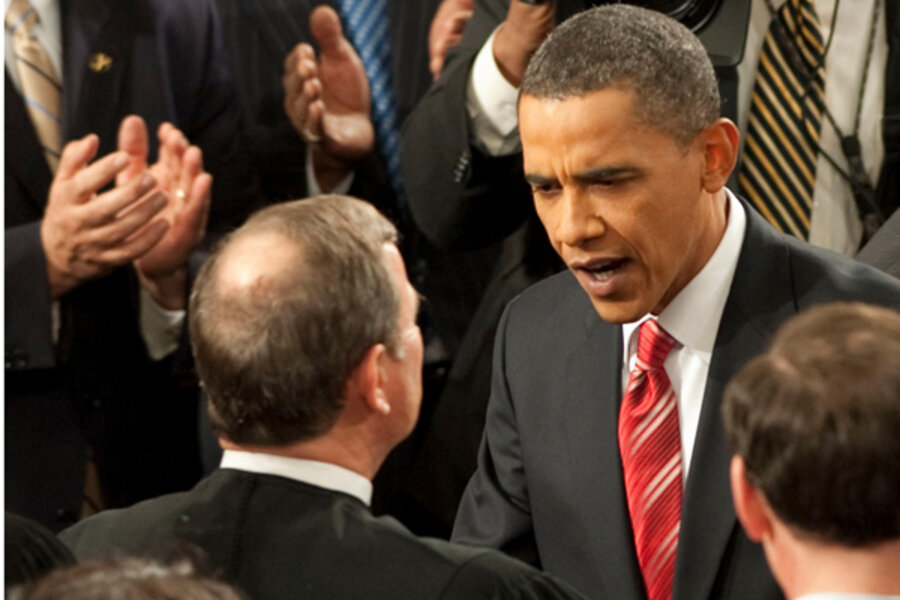Chief Justice John Roberts and Obama White House: a tit for tat
| Washington
It’s starting to look like the Hatfields versus the McCoys. Except, in this instance, it’s two branches of government duking it out: the judicial branch (Chief Justice John Roberts) versus the executive (President Obama).
On Tuesday, appearing before law students at the University of Alabama, Justice Roberts took issue with the setting of Mr. Obama’s criticism of a controversial campaign finance ruling – the Jan. 27 State of the Union address.
Mr. Roberts was responding to a question from a student, who asked if it was appropriate for the president to criticize the Supreme Court at that moment. Roberts said he had no problem with people criticizing the high court.
“On the other hand,” he continued, “there is the issue of the setting, the circumstances, and the decorum. The image of having the members of one branch of government, standing up, literally surrounding the Supreme Court, cheering and hollering while the court – according the requirements of protocol – has to sit there expressionless, I think is very troubling.”
In fact, not all of the six justices present sat there expressionless. Associate Justice Samuel Alito was caught on camera scowling and mouthing “not true” when Obama voiced his criticism.
Perhaps the whole episode would have been a nonevent had Alito not been seen reacting. But he was, and six weeks later, it’s still the most-remembered moment of the speech.
The decision at issue, Citizens United v. Federal Election Commission, gave corporations the free speech rights of individuals, allowing them to spend without limit on campaign ads. The Senate Judiciary Committee held a hearing Wednesday on the decision.
Roberts also questioned the attendance of justices at the State of the Union, which is a matter of custom, though not not all justices attend. “To the extent the State of the Union has degenerated into a political pep rally, I’m not sure why we’re there,” he said.
The White House responded before the day was out. “What is troubling is that this decision opened the floodgates for corporations and special interests to pour money into elections, drowning out the voices of average Americans,” press secretary Robert Gibbs said in a statement.
Mr. Gibbs did not respond to the complaint over the setting of Obama’s statement.
Clashes between the executive and the judiciary are not unheard of. In 1937, President Franklin Roosevelt delivered a speech attacking the Supreme Court over its opposition to New Deal legislation. Roosevelt tried to expand the number of justices on the court, to gain friendly votes, but his effort was shot down.
In the modern era, criticism of recent Supreme Court rulings has not been typical State of the Union fare.
At his meeting with students, Roberts declined an opportunity to address the criticism of the Citizens United ruling. But when asked about the State of the Union flap, he offered his opinion.
“I credit him for responding,” says Carl Tobias, a law professor at the University of Richmond.
-----





